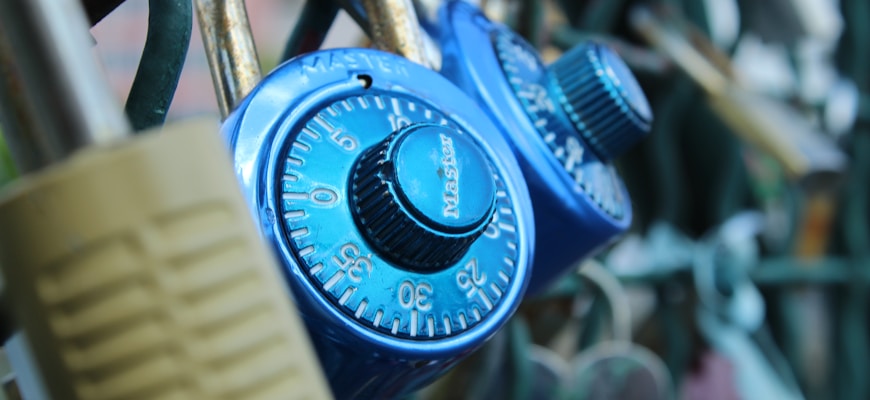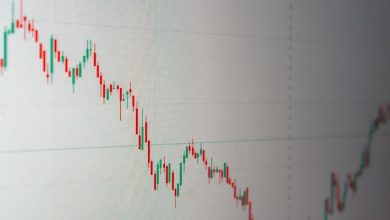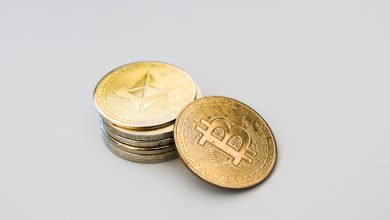How to Assess the Security of Crypto Exchanges

- Understanding the importance of security in crypto exchanges
- Key factors to consider when assessing the security of crypto exchanges
- Common security vulnerabilities in crypto exchanges
- Best practices for securing your assets on crypto exchanges
- Risk management strategies for trading on crypto exchanges
- The role of regulation in ensuring the security of crypto exchanges
Understanding the importance of security in crypto exchanges
Understanding the significance of security in crypto exchanges is crucial for anyone involved in cryptocurrency trading. Security measures play a vital role in safeguarding your digital assets from cyber threats and hacking attempts. With the increasing popularity of cryptocurrencies, the number of cyber attacks on crypto exchanges has also risen.
Ensuring the security of your investments and personal information should be a top priority when selecting a crypto exchange to trade on. A secure exchange will have robust security measures in place, such as encryption protocols, two-factor authentication, cold storage for funds, and regular security audits.
By prioritizing security when choosing a crypto exchange, you can minimize the risk of falling victim to cyber attacks and losing your hard-earned assets. It’s essential to research and assess the security features of different exchanges before making a decision on where to trade. Remember, the safety of your investments depends on the security measures implemented by the exchange you choose.
Key factors to consider when assessing the security of crypto exchanges
When evaluating the security of crypto exchanges, there are several key factors to consider. One important aspect is the exchange’s history of security breaches. Look into whether the exchange has experienced any hacks or data leaks in the past, as this can be indicative of their overall security posture. Additionally, consider the measures the exchange has in place to protect user funds. This includes practices such as cold storage of assets and multi-signature wallets, which can help prevent unauthorized access to funds.
Another factor to assess is the exchange’s security protocols and encryption methods. Make sure that the exchange uses industry-standard encryption to protect sensitive information and transactions. Additionally, look into whether the exchange has a bug bounty program in place, which encourages security researchers to report any vulnerabilities they find in exchange for a reward.
It is also essential to consider the exchange’s regulatory compliance and adherence to security best practices. Check if the exchange is licensed and regulated by a reputable authority, as this can provide an additional layer of security and oversight. Furthermore, look for exchanges that have undergone security audits by third-party firms to verify the effectiveness of their security measures.
Lastly, consider the exchange’s reputation within the crypto community. Look for reviews and feedback from other users to get a sense of how secure and trustworthy the exchange is perceived to be. Keep in mind that while no exchange can guarantee 100% security, taking these factors into account can help you make an informed decision when choosing a crypto exchange to trade on.
Common security vulnerabilities in crypto exchanges
When assessing the security of crypto exchanges, it is crucial to be aware of common vulnerabilities that could put your assets at risk. Some of the most prevalent security weaknesses in crypto exchanges include:
- Phishing Attacks: Cybercriminals often use phishing emails or fake websites to trick users into revealing their login credentials or private keys.
- Insufficient Authorization: Weak password policies or lack of two-factor authentication can make it easier for hackers to gain unauthorized access to accounts.
- SQL Injection: Inadequately sanitized inputs can leave exchanges vulnerable to SQL injection attacks, allowing attackers to manipulate databases.
- DDoS Attacks: Distributed Denial of Service attacks can overwhelm an exchange’s servers, causing disruptions in service and potentially leading to security breaches.
- Smart Contract Vulnerabilities: Exchanges that rely on smart contracts are susceptible to bugs or exploits in the code, which could result in funds being compromised.
By understanding these common security vulnerabilities, users can take proactive steps to protect their assets when using crypto exchanges. It is essential to choose exchanges that prioritize security measures and regularly undergo security audits to mitigate these risks.
Best practices for securing your assets on crypto exchanges
When it comes to securing your assets on crypto exchanges, there are several best practices that you can follow to minimize the risk of theft or hacking. Here are some key steps to consider:
- Enable two-factor authentication (2FA) whenever possible. This adds an extra layer of security to your account by requiring a second form of verification in addition to your password.
- Avoid keeping large amounts of cryptocurrency on exchanges for extended periods. Instead, transfer funds to a secure hardware wallet that you control.
- Regularly monitor your account activity for any unauthorized transactions or suspicious behavior. Report any issues to the exchange immediately.
- Use strong, unique passwords for your exchange accounts and consider using a password manager to securely store and generate passwords.
- Be cautious of phishing attempts and only use official links or bookmarks to access exchange websites. Do not click on any suspicious links or provide personal information to unknown sources.
By following these best practices, you can help protect your assets and minimize the risk of falling victim to cyber attacks or theft on crypto exchanges. Remember that security is a top priority when dealing with cryptocurrency, so always stay vigilant and take proactive steps to safeguard your investments.
Risk management strategies for trading on crypto exchanges
One of the most crucial aspects of trading on crypto exchanges is implementing effective risk management strategies to protect your investments and assets. By taking proactive measures to mitigate potential risks, traders can minimize the likelihood of falling victim to security breaches or fraudulent activities on these platforms.
One key risk management strategy for trading on crypto exchanges is to diversify your portfolio across multiple assets. By spreading your investments across different cryptocurrencies, you can reduce the impact of price fluctuations in any single asset on your overall portfolio. This can help to minimize the risk of significant losses if one particular cryptocurrency experiences a sharp decline in value.
Another important risk management strategy is to use stop-loss orders to automatically sell your assets if they reach a certain price level. Stop-loss orders can help you limit your losses in the event of a sudden market downturn, allowing you to exit a trade before it becomes too costly. By setting up stop-loss orders for your trades, you can protect your investments from unexpected price movements.
Furthermore, it is essential to conduct thorough research on the crypto exchanges you are considering using for trading. Look for exchanges that have a solid reputation for security and reliability, as well as robust measures in place to protect user funds. Verify that the exchange has implemented industry best practices for safeguarding assets, such as cold storage for cryptocurrencies and two-factor authentication for account security.
Additionally, consider using hardware wallets to store your cryptocurrencies offline, away from the internet. Hardware wallets are considered one of the most secure methods for storing digital assets, as they are not connected to the internet and therefore less vulnerable to hacking attempts. By keeping a significant portion of your cryptocurrency holdings in a hardware wallet, you can reduce the risk of losing your assets to cyber attacks.
In conclusion, by implementing effective risk management strategies such as diversifying your portfolio, using stop-loss orders, conducting thorough research on exchanges, and utilizing hardware wallets, traders can better protect their investments when trading on crypto exchanges. These proactive measures can help mitigate potential risks and safeguard assets in the volatile world of cryptocurrencies.
The role of regulation in ensuring the security of crypto exchanges
Regulation plays a crucial role in ensuring the security of crypto exchanges. Government oversight helps to establish standards and guidelines that exchanges must follow to protect user funds and data. By enforcing regulations, authorities can hold exchanges accountable for any security breaches or fraudulent activities. This creates a safer environment for investors and helps to build trust in the crypto market.
Regulatory bodies also play a key role in conducting audits and inspections of crypto exchanges to ensure they are complying with security standards. These audits can help identify vulnerabilities and weaknesses in the exchange’s security measures, allowing them to be addressed before they are exploited by malicious actors. By working closely with regulators, exchanges can stay ahead of potential threats and enhance their security posture.
In addition to regulatory oversight, exchanges can also implement their security measures to protect against cyber threats. This includes using encryption to secure user data, implementing multi-factor authentication for account access, and regularly testing their systems for vulnerabilities. By taking a proactive approach to security, exchanges can reduce the risk of attacks and safeguard their users’ assets.
Overall, a combination of regulation and proactive security measures is essential for ensuring the security of crypto exchanges. By working together with regulators and implementing robust security practices, exchanges can create a more secure environment for investors and help to mitigate the risks associated with trading cryptocurrencies.



